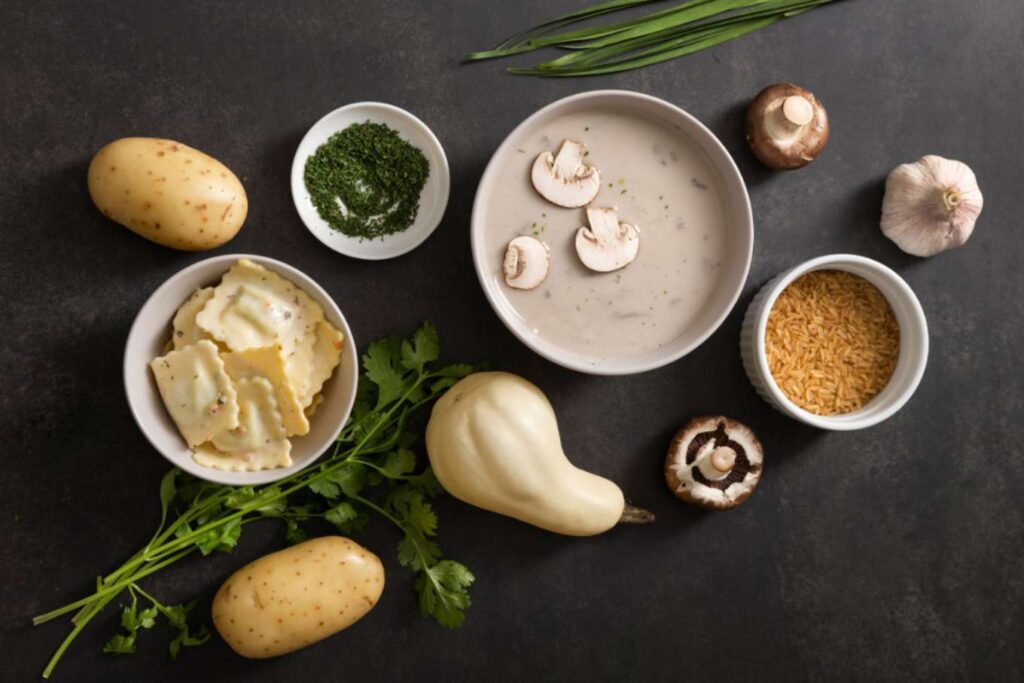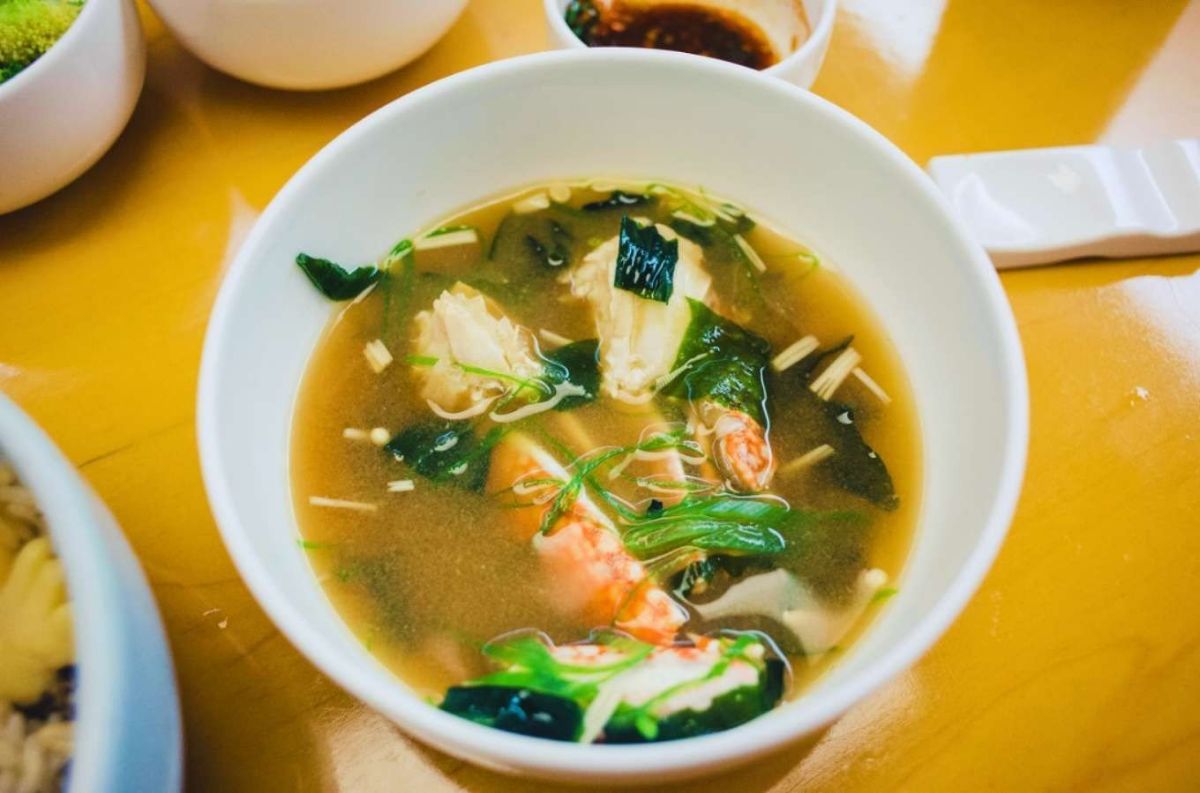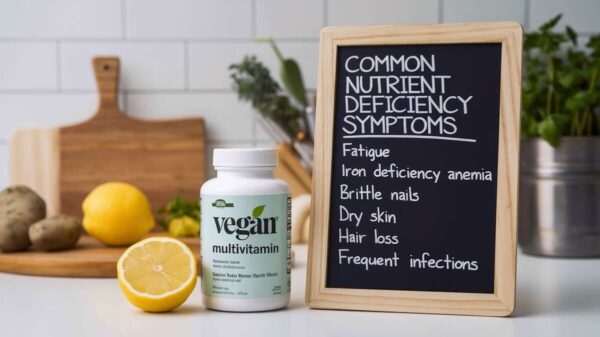Miso soup is cherished in Japanese culinary tradition for its rich umami flavor and comforting warmth. As more people adopt a vegan lifestyle, a common question arises: “Is miso soup vegan?” The answer is more complicated than one might think. In this blog post, we’ll explore the ingredients of miso soup, examine what makes a dish vegan, and provide tips on enjoying this delicious soup while adhering to a plant-based diet.
Understanding Miso Soup
Miso soup typically consists of a few basic ingredients: miso paste, dashi (broth), tofu, seaweed, and green onions. These ingredients combine to create a harmonious flavor balance that makes miso soup irresistible. However, the vegan status of miso soup largely depends on the type of dashi used and the specific ingredients included. So, is miso soup vegan?
What is Vegan?
Before discussing the specifics of miso soup, it’s essential to define veganism. A vegan diet omits all animal products, including meat, dairy, eggs, and honey. Vegans also avoid animal-derived ingredients like gelatin and certain additives. The primary motivation behind veganism can vary from ethical issues about animal welfare to environmental sustainability to health reasons, including the weight loss benefits of a plant-based diet.

To determine if miso soup is vegan, let’s break down its primary components:
- Miso Paste: Fermented soybeans, salt, and occasionally rice or barley are used to make miso paste. It comes in various types, such as white, yellow, and red miso, each offering a different flavor profile. Miso paste itself is naturally vegan.
- Dashi: Dashi, a traditional Japanese broth, often uses bonito flakes (dried fish) and kombu, making it non-vegan. However, vegan alternatives like kombu dashi or shiitake dashi exist. So, is miso soup vegan with these alternatives? Yes, it can be!
- Tofu: Tofu is a plant-based protein made by soybeans. This ingredient is widely used in vegan and vegetarian diets, making it a suitable addition to vegan miso soup.
- Seaweed: Seaweed, often in the form of wakame, is a nutrient-rich plant from the ocean. It is naturally vegan and adds a distinct flavor and texture to miso soup.
- Green Onions: Green onions or scallions are garnished in miso soup. They are entirely plant-based and vegan-friendly.
Traditional Miso Soup and Veganism
In traditional Japanese cuisine, miso soup is usually made with dashi containing bonito flakes, making it non-vegan. This is the primary reason why not all miso soup is vegan. However, you can easily make or find vegan-friendly versions with a few adjustments. So, is miso soup vegan? With the right ingredients, it certainly can be!
How to Make Vegan Miso Soup?
If you want to enjoy miso soup while sticking to a vegan diet, here’s a simple recipe for vegan miso soup:
Ingredients
- 4 cups water
- One piece of kombu (dried seaweed)
- 1/2 cup dried shiitake mushrooms
- Three tablespoons white or yellow miso paste
- 1/2 cup diced tofu
- 1/4 cup chopped green onions
- 1/4 cup rehydrated wakame seaweed
Instructions
- Prepare the Dashi: Combine water, kombu, and dried shiitake mushrooms in a pot. Let it infuse for 30 minutes, then simmer gently for 10 minutes to create vegan dashi. Remove the kombu and shiitake mushrooms before use.
- Add Miso Paste: In a small bowl, mix the miso paste with a little hot dashi until it dissolves. Then, add this mixture back to the pot of dashi, stirring well.
- Add Tofu and Seaweed: Add the diced and rehydrated wakame to the pot. Let the soup heat through without boiling, as boiling can destroy some beneficial bacteria in the miso.
- Serve: ladle the soup into bowls and garnish with chopped green onions. Enjoy your homemade vegan miso soup!
Is miso soup vegan when you follow this recipe? Absolutely!
Store-Bought Vegan Miso Soup
Many brands offer vegan options if you prefer the convenience of store-bought miso soup. Look for labels that specify “vegan” or check the ingredient list for any animal products. Some brands even use plant-based dashi to cater to vegan customers. When shopping, ask yourself, “Is miso soup vegan?” and check the ingredients to be sure.
Benefits of Vegan Miso Soup

©freepik
Choosing vegan miso soup comes with several benefits:
- Health: Vegan miso soup is generally lower in calories and fat than its non-vegan counterpart. It’s also rich in protein from tofu and packed with vitamins and minerals from seaweed and green onions.
- Ethical Considerations: By choosing vegan miso soup, you are supporting a lifestyle that avoids the exploitation of animals. This aligns with ethical vegan principles.
- Environmental Impact: A vegan diet has a lower ecological footprint than one that includes animal products. Consuming vegan miso soup reduces the demand for fish and other animal-derived ingredients, which can help preserve marine ecosystems.
Customizing Your Vegan Miso Soup
One of the great things about miso soup is its versatility. Here are some ideas to customize your vegan miso soup:
- Add Vegetables: For added nutrition and flavor, enhance your soup with additional vegetables like spinach, bok choy, carrots, or mushrooms.
- Spice It Up: To make it spicy, add a dash of Sriracha, chili oil, or freshly grated ginger.
- Grains: Add cooked rice, quinoa, or noodles to fill your soup.
- Herbs: Incorporating fresh herbs such as cilantro or basil can offer a distinctive flavor variation to traditional miso soup.
When customizing, ask yourself, “Is miso soup vegan with these additions?” as it will help ensure you stick to vegan-friendly ingredients.
Common Misconceptions About Miso Soup
There are a few misconceptions about miso soup that are worth addressing:
- All Miso Soup is Vegan: As we’ve discussed, traditional miso soup is not vegan due to the use of bonito flakes in the dashi. Always check the ingredients or ask about the preparation method when dining out.
- Miso Paste Contains Fish: Miso paste is typically vegan, but the dashi used in the soup can contain fish. Be sure to distinguish between the two.
- Miso Soup is Only for Winter: While it’s a warm and comforting dish, miso soup can be enjoyed year-round. It’s light and nutritious, making it suitable for any season.
Dining Out: Is Miso Soup Vegan?
When dining out, especially at Japanese restaurants, it’s essential to ask about the ingredients in their miso soup. Many establishments use traditional dashi made with bonito flakes. However, some may offer vegan alternatives upon request. Don’t hesitate to ask your server, “Is miso soup vegan here?” for the necessary information.
Conclusion
So, is miso soup vegan? It can be, but you must consider the ingredients, particularly the dashi. You can enjoy a delicious bowl of vegan miso soup using plant-based dashi and ensuring all other components are vegan. Whether you make it at home or find a vegan-friendly option at a restaurant, vegan miso soup is a delightful and nourishing choice that aligns with a plant-based lifestyle.

















